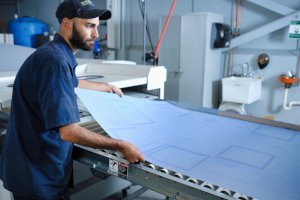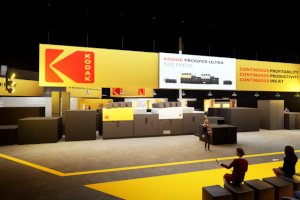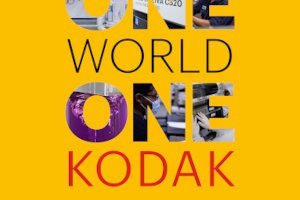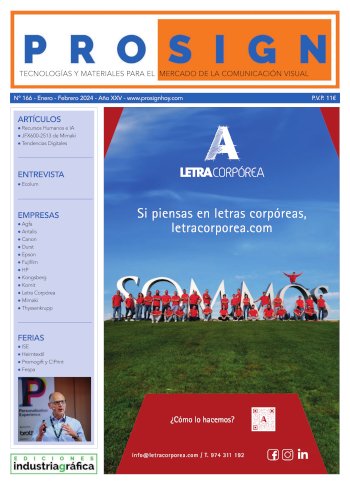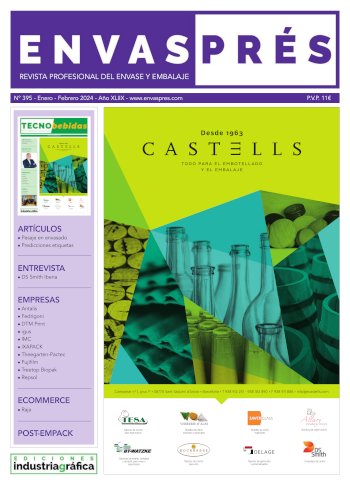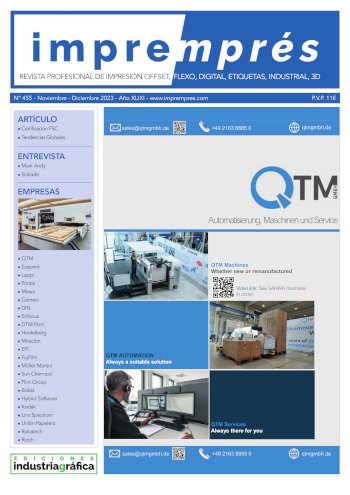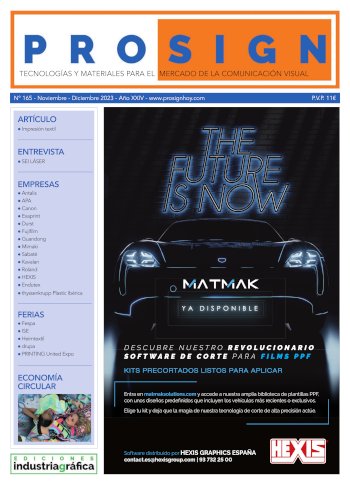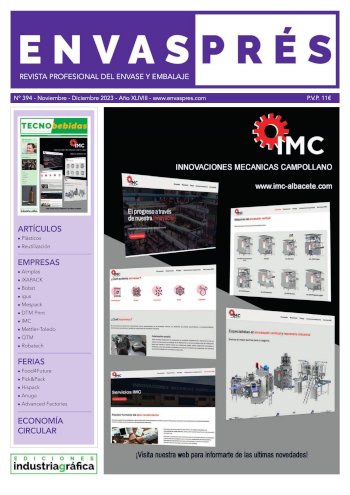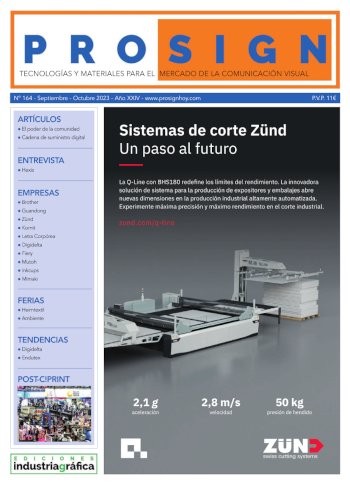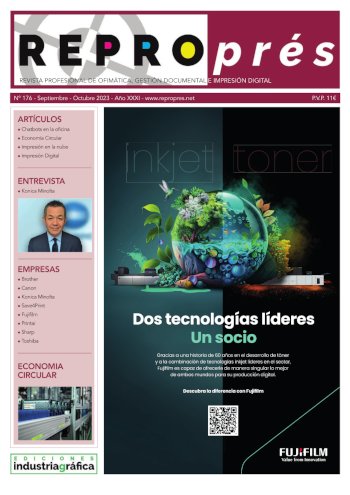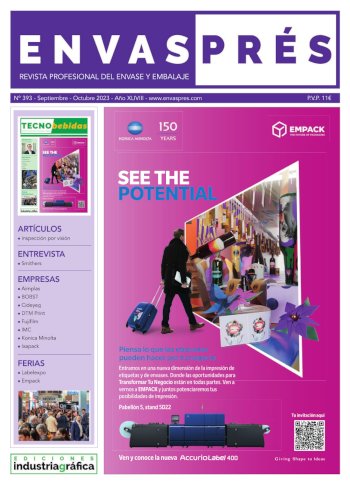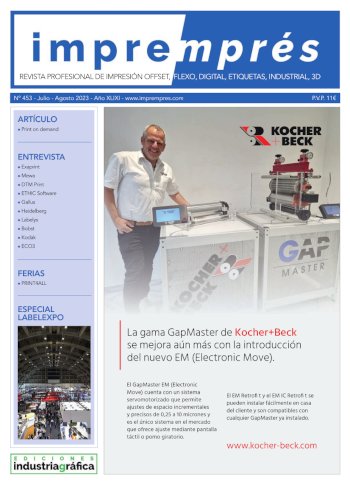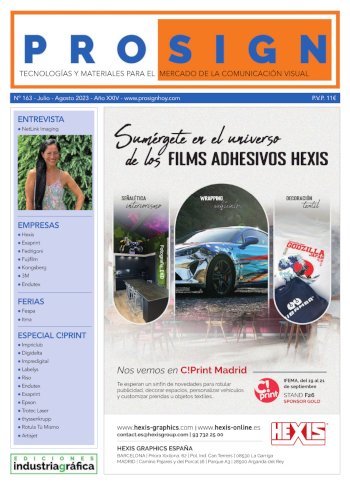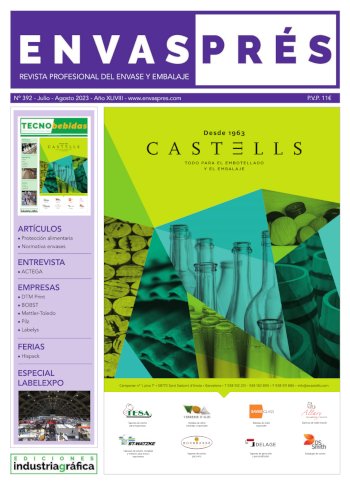Kodak Process free plates extend their reach in UV printing
- Publicado el 07 de Abril de 2017
Offset printing has been a specialty of cre art in Fulda, Germany, for more than four decades now. In spite of this, Torsten Gröger, Production Director and responsible for customer service, leaves no room for doubt regarding the firm’s principal focus: “We’re an advertising agency that also operates a print shop and provides media services.”
The print shop, which belongs to the advertising production division (“Die Werbeproduktion”), does about half of its work for the in-house advertising agency (“Die Werbeagentur”) and the other half for external clients like production agencies. The acquisition of a Roland 700 HiPrint hybrid sheetfed offset press in spring 2016 marked an important strategic step. This B1 format press boasts numerous extras and technical refinements. It can be used for production in LEC UV (Low Energy Curing) or conventional offset and is equipped with five printing units with two LEC UV interdeck dryers, plus a coater with a conventional UV dryer that is installed downstream for top gloss coating results.
“We’ve got a reputation in the market for specialized solutions and for our ability to develop and print products no-one else dares to touch. The path we’re following into the future is that of a niche printer. We’re not aiming to break any volume records working three shifts flat out – instead we reflect every single day on how we can set ourselves apart from the rest,” says Gröger. “UV printing is a good way for us to break free from the interchangeableness that currently dominates the market. Our UV press allows us to print demanding, complex jobs on any substrate with a variety of in-line special effects.” He’s referring here to things like printing with a UV gloss coating, spot varnishing, drip-off finishes, additional whites or varnish, scratch-off inks or scented coatings.
cre art uses the new KODAK SONORA UV Process Free Plate, developed as the longest-run process free plate for printing with UV curable inks, for production with the highly reactive LEC UV inks. The company has been working with this newest addition to the KODAK SONORA Plate family as a beta tester since March 2016. However, process free plates have been firmly established at cre art for a while. The date is engraved in Torsten Gröger’s memory: “We switched to the SONORA XP Process Free Plate from a chemistry-free plate, which had to be treated with clean-out finisher after imaging, on May 26, 2014. We’ve been printing with process free plates without any problems ever since.”

He sums up what it is that makes SONORA Process Free Plates so attractive for cre art: “The main advantages for us are less process variables and more stability as well as easier handling. We wanted to cut out cleaning and maintenance of the wash unit and have no more clean-out finisher to dispose of. The process free plates obviously offer us substantial environmental and economic benefits because the chemicals, water, and electricity which are unavoidable with classic processing can now be dispensed with. We worked out that with our plate consumption we save about 6000 euros a year on energy, water, and disposal, as well as on cleaning and servicing the wash unit. However, what’s even more important for us is that the SONORA Plates take up less room in the prepress department. There quite simply isn’t any free space for a processor anymore near our CTP system.”
Speaking of CTP, cre art has a KODAK TRENDSETTER 800 II Quantum Platesetter with the Autoloader option for 50 thermal plates. Up to 700 plates per month are imaged on this CTP system, which uses KODAK SQUARESPOT Imaging Technology. Ninety percent of them are destined for the LEC UV press. The remainder are plates for a conventional five-color press with a coater in 36 x 52 cm sheet format, which is used for smaller jobs, business cards, stationery, and the inner sleeves of vinyl records. When it comes to screening, cre art uses a cross-modulated 250 lpi screen as standard, underlining its own commitment to quality, as well as a 200 lpi AM screen for a few, specific applications.
The Roland 700 press introduced cre art to the fundamental advantages of UV technology in conjunction with low energy curing: absolutely dry sheets with a scratchproof image in the delivery section which can be duplexed or finished immediately, no more spray powder, comparatively low energy consumption and heat development in the LEC UV dryers, ozone-free printing, and reduced odors from both the products and the production process. “What really makes the difference here is the freedom the LEC UV process gives us to also print on difficult substrates reliably and with brilliant results, for instance on recycled or uncoated papers, synthetic materials of all kinds, or metallized papers,” Gröger emphasizes.
It’s no secret that the highly reactive inks and auxiliaries which are employed for UV printing present particular challenges about plate life. With the SONORA XP Process Free Plate, cre art achieves 7000 impressions in LEC UV applications. “When Kodak then asked us to beta-test the KODAK SONORA UV Process Free Plate to pave the way for significantly longer runs with the same printing properties, we had no hesitation. A Kodak media specialist provided us with active support and showed us a suitable path,” Gröger reports. “In the meantime production with the SONORA UV Process Free Plate is very stable and we can manage up to 20,000 impressions depending on the substrate.” He adds that both SONORA plate types make do with the same press settings and are handled in exactly the same way.
The cre art calendar – a joint effort on the part of the firm’s employees for the past sixteen years – represents an effective vehicle for communicating the advertising agency’s creativity and for demonstrating the print shop’s quality and production capabilities. To date, cre art calendars have won eleven medals in the prestigious gregor international calendar award competition, most recently in 2016 (silver), as well as an Award of Excellence in the “Excellence in Production” category. The 2017 calendar under the motto “Clarity” was printed using the high-impact options opened up by the LEC UV press and Kodak’s process free plates.
“Thanks to the new KODAK SONORA UV Process Free Plate and the numerous UV and finishing extras with which our press is equipped, we can produce complex and demanding jobs on any substrate. The level of creativity and quality is very high, and this kind of work would have been technically impossible only a few years ago. The SONORA UV Process Free Plate enables significantly longer run lengths with at least twice as many impressions as we get from the SONORA XP Plate,” Gröger concludes.
cre art was founded by Ernst Neidhardt and Pedro Herzig in 1970 as a graphic design studio. Today, cre art (www.creart.de) employs around 40 people at several different sites in Fulda, Germany. “Die Werbeagentur”, the advertising agency, focuses on consulting, concept development and creation, and media services. The agency’s creative and productive activities, which have won cre art several prestigious industry awards, are complemented by an in-house photographic studio and the multimedia expertise of its COM.POSiTUM subsidiary.
“Die Werbeproduktion”, responsible for advertising production, has had its own print shop since 1976. Apart from two sheetfed offset presses, this also includes a separate finishing department. cre art is aiming at renewing its ISO 12647-2 (Process Standard Offset) certification later this year.


